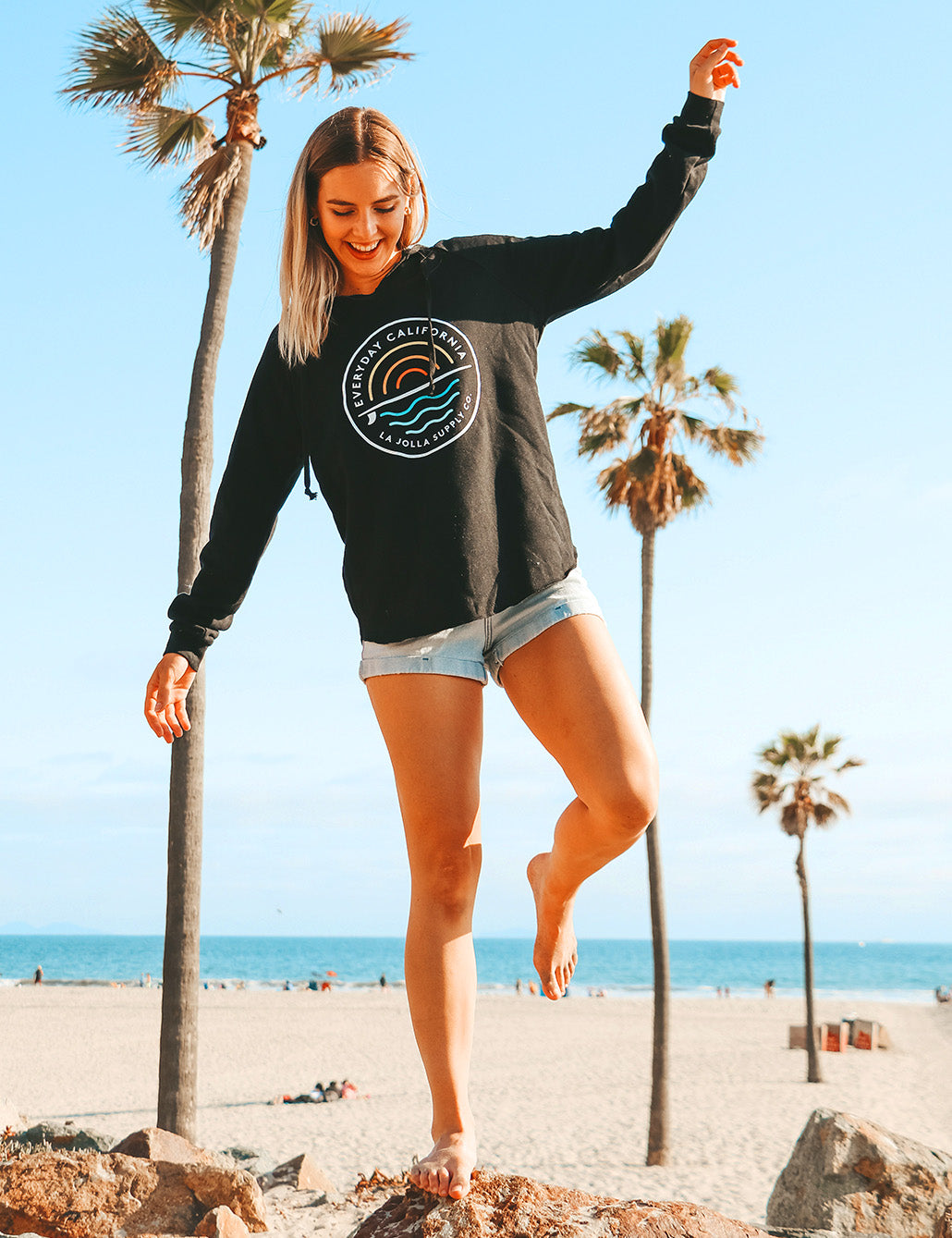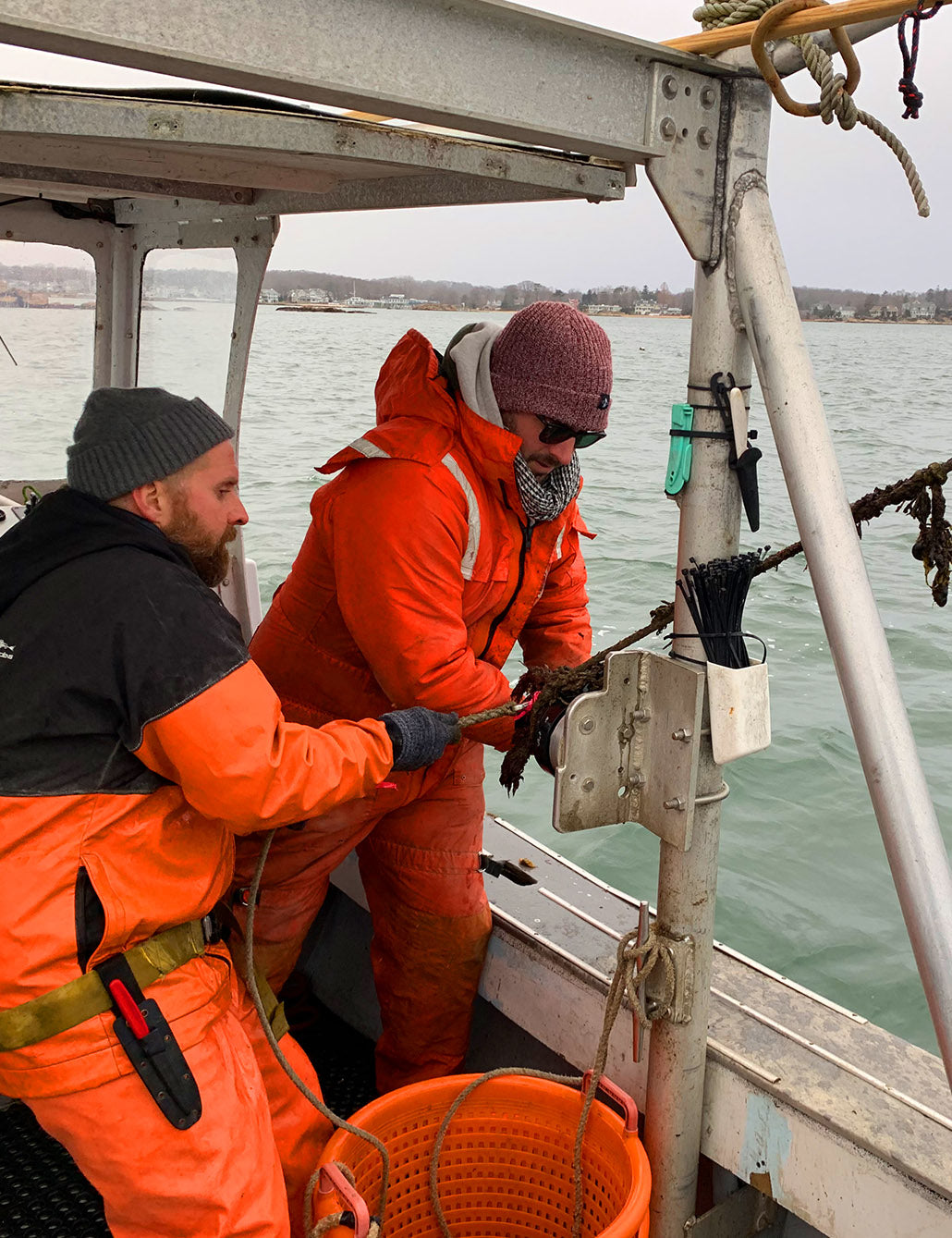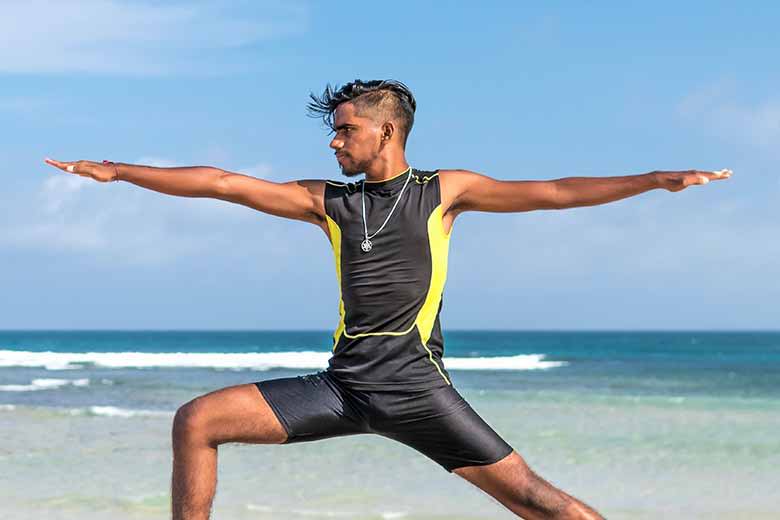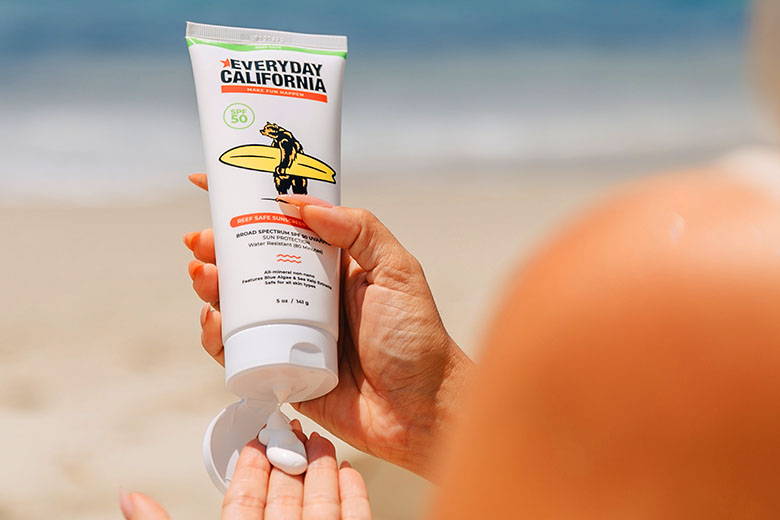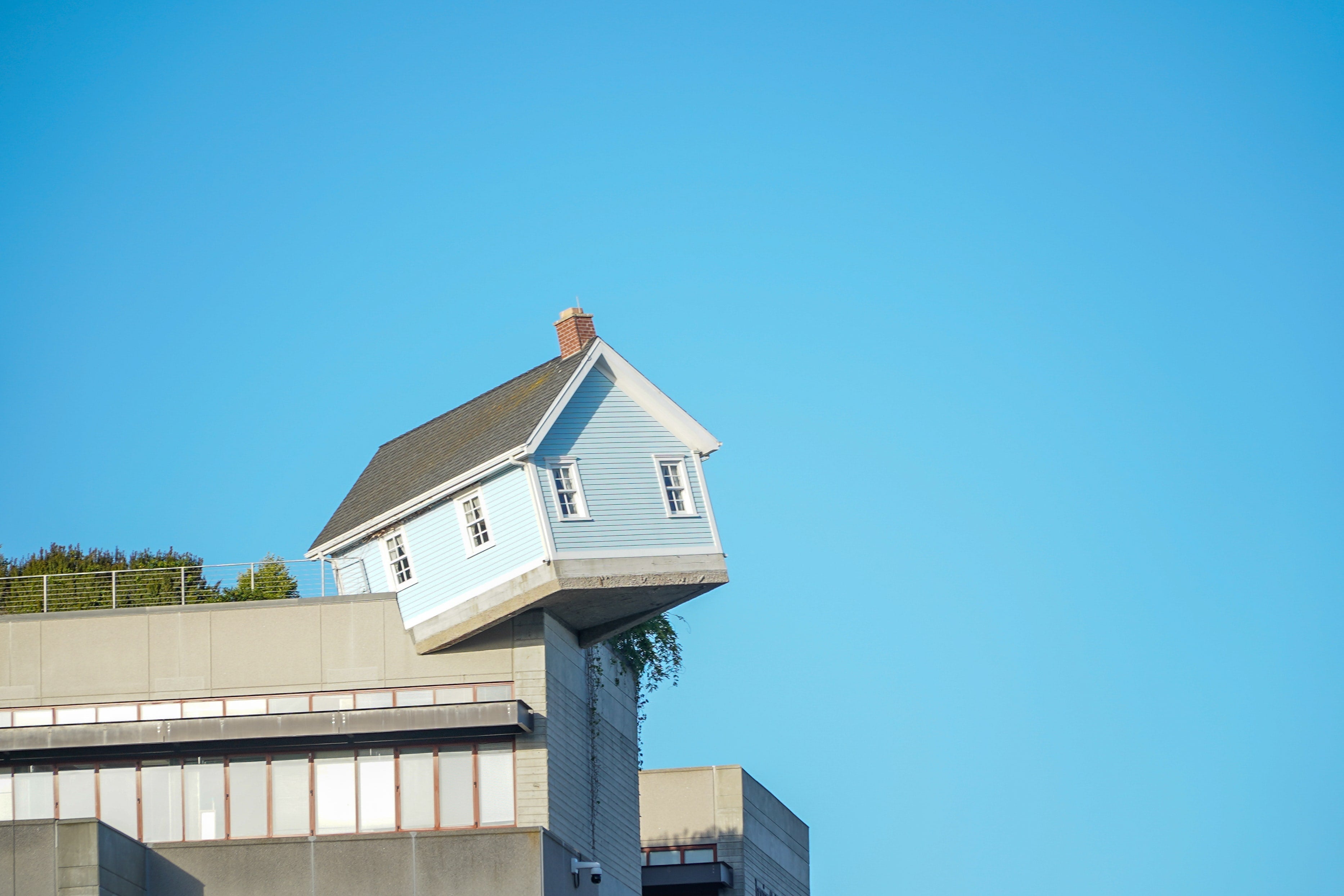When you're looking for exercise that gets you moving gently but efficiently, yoga is usually the answer. But when your soul cries out for nature, sitting in a yoga class at your local fitness center isn't always what you want.
Luckily, there are SUP yoga classes to solve your problem. This type of yoga practice combines the full-body workout of yoga with the beauty of the outdoors. Instead of completing your downward-facing dog on land, you get the obstacle of completing your poses on a paddleboard.

What does "SUP Yoga" mean?
SUP yoga is short for "stand-up paddleboarding." As the name implies, in a SUP yoga class, students follow a yoga instructor who teaches the group the normal yoga routine but in the middle of a lake or another body of water.
Whether you're just starting out in the field or are experienced yogis, SUP yoga is a fun and relaxing way to get your exercise in the beauty of the outdoors. With nothing but you, some water, and a board, the adventure can begin.
To give you all you need to know to get started, we'll dive deeper into the world of SUP yoga on the water.
The Benefits of (Floating) Yoga
A yoga workout has significant benefits on its own. It's a calm and peaceful way to work muscles by focusing on balance and strength rather than weightlifting or cardio.

Yoga is highly recommended by fitness and healthcare experts because of its wide range of mental and physical gains. People who engage in regular workouts have:
-
Better flexibility and balance
-
Improved strength
-
Reduced discomfort from back and neck pain
-
Overall better cardiovascular health
-
More energy
-
Better moods and overall enhanced quality of life
-
Improved stress reduction management
Yoga's health benefits range from improved sleep to less intensity of symptoms in conditions like arthritis. But when you add the fun of doing yoga while practicing on an inflatable paddle board with friends, the advantages are endless.
Extra Advantages of a SUP Yoga Class
In addition, paddle boarding with SUP yoga gives you the chance to refine the techniques you learned in your on-land classes.
Yoga poses that are easy for you to do right now will be a lot more challenging when you're trying to practice them on a stand up paddle board.
Your yoga skills don't have to be on point to jump right into SUP yoga. If you want a new challenge, there's nothing better than SUP yoga. It's also perfect for anyone wanting guidance on how to relax or help breathing their way to better balance and strength.

A Sample SUP Yoga Routine for Beginners
The best way to learn about SUP is to delve right into a typical day on a stand up paddle board doing yoga. We'll break down what you'd see with land yoga versus what you'll do on the water with paddle boards.
Most of the SUP yoga poses are the same as their land counterpart. The difference is the added challenge of trying to balance while standing on your personal flotation device.
The routine might start with a warm-up consisting of a seated pose to get you used to the floating yoga session. From there, you'll stay sitting on your board as you flex your spine and do some stretching.
Getting You Ready to Stand
When it's time to stand, you won't be on your own until you're ready. The instructor will guide your arms and help you as you get vertical. A wide stance as you get on the stand up paddle board increases your balance until you're used to the SUP movements.
Practicing yoga and exercising on a stand up paddle board is each challenging on its own. Now, you're learning how to do the mountain pose on a board instead of a yoga mat on land.
It's probably not going to be something you master immediately. Many people, beginner through advanced, end up in the water a few times. It really is okay; you'll get better with practice, as we all do!
SUP Yoga in Motion
As soon as you feel stable on your paddle board, the fun can begin. The instructor will lead you through the tree pose, Warrior I, and other yoga poses. Any time you think you need a more stable base, you can ask for help. Most yogis will tell you to feel free to adjust your pose for your comfort as you're learning.
Your routine will have you doing everything from leg extensions to upward salutes. On hard boards, getting your balance isn't as difficult. But any board yoga is a challenge, especially if the water is moving.
SUP yoga classes are run by experts, though. They know the troubles that can come with paddle boarding on the water, and they're there to be your guide.

Everything You Need to Start SUP Yoga
The supplies you need for your SUP yoga classes are a combination of yoga materials and beach items, plus a board. Each item varies depending on where you are practicing yoga.
Paddle board yoga on a lake in the middle of spring in California, of course, will be different than it is in upstate New York at the same time. And how you stand up paddle on a glassy lake is not the same as someone trying SUP yoga on a flowing river.
Starter Supplies for Your SUP Yoga Class
This list will get you started until your instructor gives you more detailed requirements:
-
A paddle board. The majority of the boards you'll find in stores have a foam core and are covered with layers of fiberglass and epoxy resin. These are fine for SUP yoga classes. Cheaper board options are made of foam, but these don't maneuver as well. The best paddle boards are made from foam cores covered with carbon fiber. You don't need top-of-the-line boards for yoga unless you plan on using them outside of yoga, too.
-
Sun protection. Plan for your paddle board yoga class as though you were heading to the beach to enjoy the day. What kind of sun care would you use? The minimum suggested by most instructors is a strong sunblock with a broad-spectrum SPF. You should be able to wear it for at least an hour before needing to reapply. By that time, the class will be about over.
-
Water. Staying hydrating with any workout is essential. Falling in the water doesn't count. You'll need a water bottle with a base that's stable enough to stay on your board. It also needs to be sealed well enough to hold up to landing in the lake if your paddle board flips.
Other than these basic supplies and your persistence, there isn't much you need to have for SUP yoga. Remember, everything you bring has to sit on your paddle board, and it could get wet or lost in the water. Only bring what's absolutely necessary for your workout.

Typical SUP Yoga Attire
What you should wear to your practice session also depends on your environment. Typically, the goal is to have as little resistance as possible.
Water-resistant attire is essential. Whether you're a male or female, a rash guard is recommended. These are athletic shirts that protect your skin from UV rays and rashes. Because they're designed to be worn for surfing, they're usually made with materials like spandex, polyester, or nylon.
Surfers wear rash guards to avoid the harsh sun and stay on their board, and so can you!
Two Points to Keep in Mind:
If it's cold, start out with a bathing suit or boardshorts with a windbreaker or light jacket as you get started. But you're not going to stay cold for long. Wear something that you can take off as your workout kicks in and you begin to sweat.
However, make sure you have a method to keep it out of your way and hold onto it if the board tips. A dry bag that is water-resistant and lightweight works well.
Stand up paddle boarding is tricky. Even the lightest object on one end can throw your balance on the board off.
Find a SUP Yoga Trainer Near You
Any place that has a big enough body of water can be a setting for SUP yoga. If there isn't a lake, river, or bay nearby, a pool and a paddle board can do in a pinch!
SUP workouts are usually weekly. Once the instructor finds a good, calm place to practice, the board workout begins.
What to Expect in a SUP Yoga Session
Most of these sessions are about an hour, starting with a quick paddle, then moving into focused breathing and salutations. From there, beginner paddle board yoga poses get new people used to balancing with their shoulders and muscles in their legs.
To find a group practicing SUP yoga near you, talk to your local fitness center staff. You can also type in "sup yoga near me" in a search engine.
Not every city has SUP yoga yet, although the benefits of the workout are spreading like wildfire. For people who can't get to a class, grab a group of friends and your paddle boards, and practice yoga together wherever you can!


